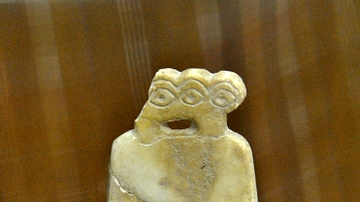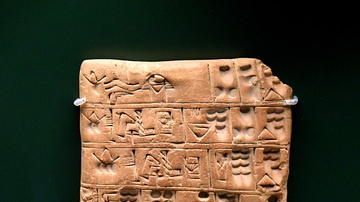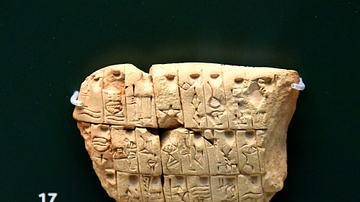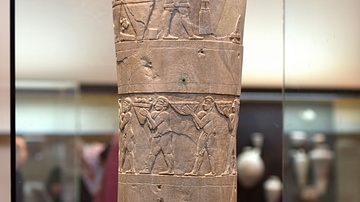Illustration
These 2 unusual green schist stone tablets seem to belong together and record a land sale; it appears that there was a transaction, in which land was exchanged for various goods, with the carved figures representing the individuals involved. When the British Museum received these 2 tablets in the year 1899, they were dismissed as "2 forgeries purporting to be Babylonian inscriptions". Later on, the Museum showed that these tablets were genuine and represented earliest examples of the developing cuneiform script (still mainly pictographic). Possibly from Tell Uqair, Southern Mesopotamia, Iraq. Jemdet Nasr Period, 3000-2900 BCE. (The British Museum, London)
Cite This Work
APA Style
Amin, O. S. M. (2016, April 07). The Blau Monuments. World History Encyclopedia. Retrieved from https://www.worldhistory.org/image/4855/the-blau-monuments/
Chicago Style
Amin, Osama Shukir Muhammed. "The Blau Monuments." World History Encyclopedia. Last modified April 07, 2016. https://www.worldhistory.org/image/4855/the-blau-monuments/.
MLA Style
Amin, Osama Shukir Muhammed. "The Blau Monuments." World History Encyclopedia. World History Encyclopedia, 07 Apr 2016. Web. 26 Apr 2024.







